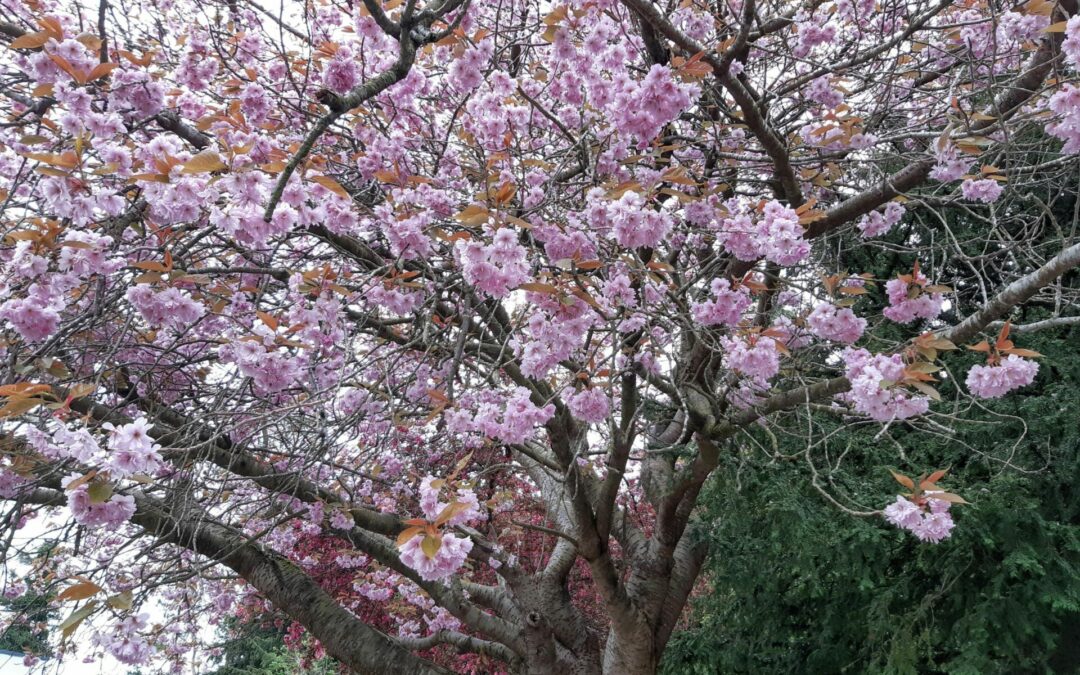If you are out in the cities or countryside you will be able to spot trees in blossom, like the cherry tree pictured above, and many native wildflowers in all shapes and sizes. You might even see carpets of dandelion, Scottish bluebell, primrose and wood anemone.

A carpet of dandelions
In fact, late spring or early summer is the best time for flowers, and so why would this be? Plants may look peaceful to us, but actually they are racing against time and against each other. And each species is seeking the best strategy to win the race.
All plants need the sun! They can manufacture their own food directly from sunlight through their green leaves.
Scotland is at a Northern latitude, and most of our native plants will conserve energy and sleep during the cold winter. You know that small animals can hibernate, and similarly, ground plants will die back, and deciduous trees like beech and horse chestnut will drop their leaves in the autumn.
However, once spring comes round again and the days lengthen and the temperatures increase, the plants begin to jostle with one another to see who can get to the sunlight quickest.

Scottish bluebells
Small flowering plants sprint ahead among the front runners. This is because if they waited until warmer temperatures later on, they would lose out to the competition. In high summer, when all the big plants are in full leaf, less sunlight will reach small plants on the ground. On the other hand, the risk of flowering too early is a risk of frost which can be fatal to the delicate plants.

Blackthorn tree
You might notice that some trees, like the blackthorn, will put out their blossom before their leaves. These plants are relying on energy stores made last year to do this. The small white flowers are pollinated by insects, such as bees. Early pollination helps the plant get ahead, and form the next generation which are seeds, fruits and nuts. Insects don’t like cold weather, and so the risk for plants if they bud too early is there may be a lack of insects around.
In the autumn, the blackthorn tree produces a dark purple fruit or drupe, known as a sloe berry which can be used to flavour gin.
Almost all flowers are pollinated by insects, and that is why the petals look cheerful and colourful as they have to look tasty to the insects as well! Some plants such as willow catkins are wind pollinated.
Producing seeds is another race against the clock so they are all ripe and ready by the autumn. They can fall to the ground, or be eaten or carried away by animals, and so are safely tucked away before the winter comes.

Horse Chestnut tree
The horse chestnut has big leaves like hands and is also developing its candle-like flowers. It is known as the Candle tree. In the autumn it produces shiny, brown conkers. In race terms, a large tree like this can go the distance.
The bigger trees, oaks, sycamores and beeches are just behind the smaller plants and their leaves are still in bud just now. But they will soon catch up and overtake, as these giants are the tallest trees in the wood!
One of the best places to see bluebells is at Glen Finglas in the Loch Lomond and Trossachs National Park. Find out more about the March of the Bluebells.
Learn all about Scottish trees from the Woodland Trust.


Recent Comments